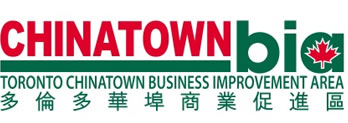Toronto Chinatown is vibrant and multicultural. Many of the area members and residents are descendants or immigrants from Asia: China, Hong Kong, Taiwan, India, Pakistan, Vietnam, Laos, Cambodia, and other Southeast Asian countries.
The history of Toronto’s Chinatown stems back to the late 1870s, with the opening of the first Chinese business, owned by Sam Ching. His laundry wash was located at 9 Adelaide Street East. Many Chinese people who had come to Toronto for a better quality of living were surprised to see the inequality in jobs, living and overall treatment of the Chinese. When the Chinese emigrated from their homelands to Toronto, many of them were not able to find jobs because of systemic discrimination and used what skills they had to earn an income. The growth of the Chinese population was sluggish and by 1881, there were only 10 Chinese people residing in Toronto.
The First Chinatown Location
The number of stores in old Chinatown grew over the years of the late 1800s-early 1900s, forming a little enclave on Elizabeth Street, from Queen Street West north to Dundas Street West. The variety of businesses in the area was limited, consisting primarily of laundry washes, restaurants, and dried goods shops. Settlement by the Chinese developed in the 1920s and was firmly established at this location for several decades. This was done after the relocation of the Jewish residents to Kensington Market. The Chinese residents had developed their shops, associations, political groups, media networks, theatres, and opera houses in the area of Elizabeth St, and along the smaller streets adjacent. By the 1940s, the population in Toronto’s Chinatown was the third largest, after cities Victoria and Vancouver, both located in British Columbia.
The stable and developed Elizabeth Street faced abolishment when a discussion of a new City Hall arose. This new building for city officials and councilors was to be built at Louisa and Elizabeth Streets. This meant many Chinese businesses and residences would be demolished to make way for a brand new building. A committee, dedicated to the preservation of shops and residences along this area was founded in March 1968 and led by Jean Lumb. Ms. Lumb later won the Order of Canada for her dedication and commitment to this project. Demolition decreased the area of Chinatown by two thirds and this space was used for the new City Hall and Nathan Phillips Square.
Moving to Dundas Street. W.
After the erection of the new City building, the prices for the land in this area skyrocketed and there were not many people that could afford to live in the same area they once had. Thus, they moved from Elizabeth Street, onto Dundas Street West, from the intersection of Elizabeth Streets all the way to Bay and Dundas. Nowadays, there are still many signs on these old buildings, although many of the associations have vacated the area.
Today, the West Chinatown (中區唐人街/中區華埠/中國城) is a portion of Old Chinatown that has been relocated to Spadina Avenue and Dundas StreetWest and is one of five Chinatown ‘hubs’ of the GTA (the other 4 being East Chinatown, Markham/Richmond Hill, Scarborough, and Mississauga). If you take a walk through Old Chinatown, along Elizabeth Street, up to Dundas Street West, there are still many signs that remain on their old buildings and while vacated, are remnants and indicators of Toronto’s history and the challenges the Chinese faced when developing in this city.
Source for information: Chan, Arlene. The Chinese in Toronto from 1878: From Outside to Inside the Circle. Toronto: National Heritage, 1987. Online.
以中文閱讀
